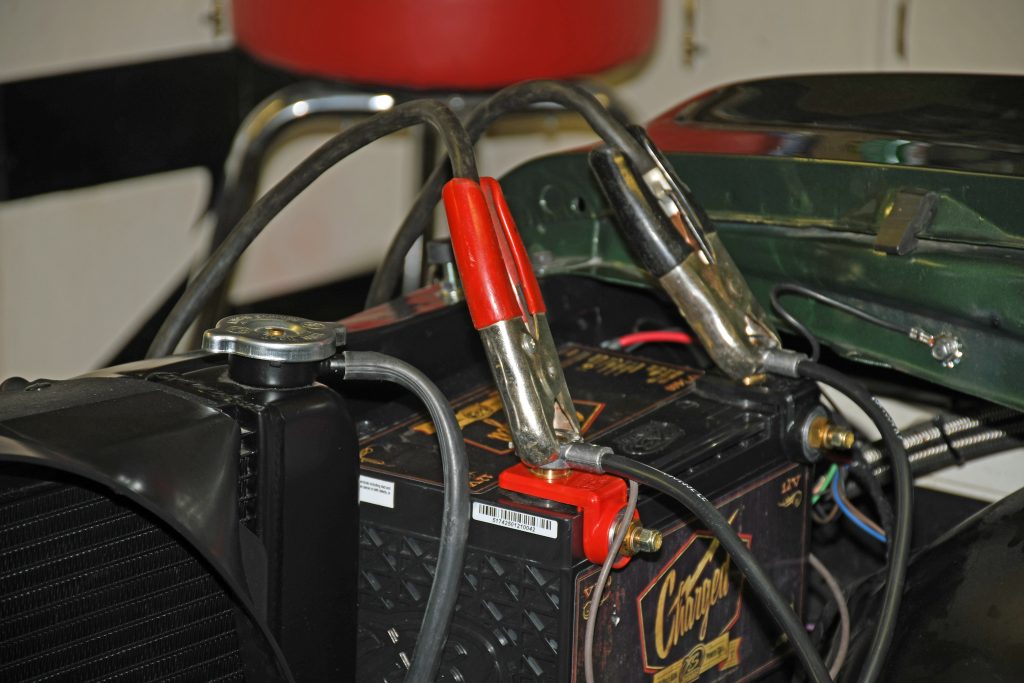
It’s one of the most-searched automotive questions on the internet.
It’s also one of the most-common reader questions we get here at OnAllCylinders.
“Why won’t my battery hold a charge?”
Truth is, it might not be your battery’s fault at all. It could actually be a problem within your vehicle’s charging system at large. We realize this is old knowledge for you seasoned car owners, but here are a few tips to help determine whether your battery or alternator is to blame.
First, focus on your battery.
If your vehicle has stopped running, jumpstart the engine, remove the jumper cables as quickly as possible, and wait. We recommend you let the car run for a bit if you’re in a parking lot or away from traffic. If the vehicle keeps running after a period of time, there’s likely a problem with your battery. Take into account the outward appearance of your battery. Does it look corroded or old? It might simply be time to replace it. Also, inspect your battery cables and make sure they are in good shape. Bad cables will not deliver the full current flow needed to operate properly.
If, after you’ve jumpstarted the battery, it won’t hold its charge and the engine stalls, then it’s time to turn your attention to the alternator. Although your battery may have enough energy to fire the engine, it will eventually lose power if it’s not being recharged by the alternator. That’s why it’s recommended to wait before hitting the road right way.
Quick ways to pinpoint a bad alternator:
1. Crank over the engine, turn on your vehicle’s lights, and observe. If they start bright and then slowly fade, your alternator might not be delivering the proper charge to operate your vehicle accessories.
2. Get a quality voltmeter or multimeter and test your battery’s charge. The voltmeter should read around 12.6 volts with the engine off and 14-15 volts with the engine running. If voltage is below 13.5 Vdc, there’s a good chance the alternator isn’t keeping up with your battery’s charging needs.
3. Use the jumpstart method above. Jumpstart the battery and wait! If the alternator’s bad, your car or truck will die out again as the battery is not recharged.
Before replacing your alternator, check the alternator cables for abnormal wear like cracking or fraying. You may also want to replace or tighten the alternator cables as necessary. If none of this works, then it’s likely time to replace that alternator.

why does my dashboard lights go of when I put on the headlights and also why does my battery wont hold its charge we put on another alternator when we leave the jump leads on the battery is charging but when you take them off it start losing its charge any ideas what it could be thank you
Hey Trevor, without knowing too much about your vehicle, I can only suggest a few basic diagnostics. The fact that your dashboard/gauge lights turn off when you engage your headlights points to either a short in the harness or a faulty switch.
On a lot of vehicles, particularly older ones, the headlight switch is a single unit and often controls the interior lights too, including the dimmer functions. If you can inspect that (and clean/replace as necessary), it may resolve the issue.
As to battery drain, you could be experiencing parasitic power loss as a result of a fault in your wiring harness (which would also explain your headlight issue). Resolving your headlight problem might be a smart first step–again, check the condition of the switch and then break out your vehicle’s wiring diagram and examine the headlight circuit, looking for broken wires, ripped or missing wire sheathing, moisture ingress, or loose connectors.
We did the above to determine the alternator is bad yet when we replaced it with a new alternator out of the box, it still is not charging. My mechanic is getting another one on the premise that it could be a bad unit. If the second alternator doesn’t work, then what?
I have already replaced the alternator.. then I replace the starter it still doesn’t Hold charge
I went to start my car and the battery was dead and I got a jump everything was fine until I went back outside to restart my car and the battery was dead..I got another jump same thing happened..Do u have any ideas what that could be? Lights come on and everything works..I really appreciate it..TY
If your battery is not holding a charge, you could have a draw on the system when the key is off. try disconnecting your battery when its parked. If it starts the next morning, then you probably have a draw. remove the ground cable from the battery, and put a 12v test light between the cable and the ground terminal on the battery. with everything off and doors closed, if it lights up, you have a draw. pull fuses until the light goes out. when it does, thats the circuit the draw is on.
[…] Quote from the source: … […]